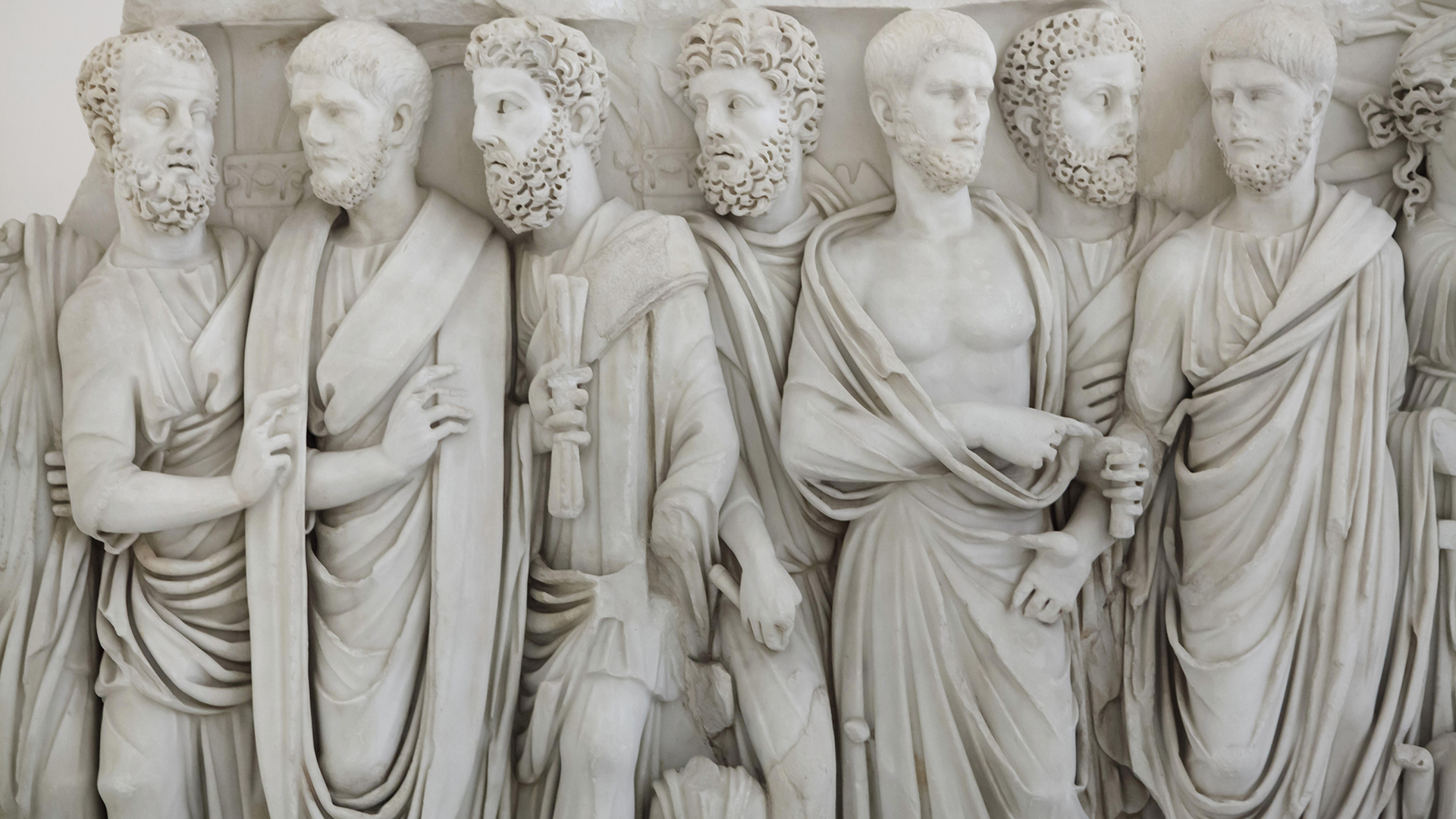
Who really wore togas?
Who actually wore togas, and what were they for?

"Toga. Toga! TOGA!" It's a familiar cry that rings across college campuses, both in the movies and in real life. If you went to a college with an active Greek life scene, you may have even wrapped up in a bedsheet and attended at least one toga party.
But what did togas actually look like? Were they nothing more than glorified sheets? And who wore them historically?
Wearing a toga would have been a sweaty undertaking. Traditionally, togas were long pieces of fabric, about 12 to 20 feet (3.7 to 6 meters) in length, which were draped over a plain tunic. And they were usually made of wool. "I can only imagine what it must feel like to be swamped in wool in an Italian summer. It must have been really terrible," Kelly Olson, a fashion historian at the University of Western Ontario in Canada, told Live Science.
Related: Why did the Roman Empire split in two?
Still, that's not so different from fashions throughout the ages.
"Humans have always worn things that were uncomfortable, especially for status reasons," said Ursula Rothe, an archaeologist and a senior lecturer at the Open University in England.
Wealthy Roman men wore togas as a sign of both status and citizenship. However, togas probably weren't worn all the time. Rothe said that they likely filled a role similar to that of the modern business suit, donned for 9-to-5 administrative work or special occasions like weddings and funerals. "You probably didn't see many out in the countryside," she told Live Science.
Sign up for the Live Science daily newsletter now
Get the world’s most fascinating discoveries delivered straight to your inbox.
And togas weren't worn by ancient Greek people at all — at least, not until after they'd been colonized by the Roman Empire. Instead, the Greeks favored a garment known as a himation, which was also put on by draping. One of the main differences between the himation and the toga was the bottom hem; the himation's was straight, while the toga's was curved. Additionally, people of all genders in ancient Greece wore himations, while mainly wealthy men with full Roman citizenship wore togas.
Different togas signified different things. The standard toga was a plain off-white, and any variation said something specific about the wearer. The children of rich Romans wore togas with a crimson border, meant as a symbol of protection, until they reached puberty. Dark gray or black togas were reserved for funerals, while purple and gold-embroidered togas were worn by triumphant generals, according to the World History Encyclopedia. Elected political figures were instantly recognizable by their toga's wide purple trim. And potential politicians even had their own distinctive dress.
When a Roman citizen decided to run for office, he (and it was always a he) would announce his campaign by whitening his toga with chalk, a process called "candidus," which means spotless. "That is where we get our word 'candidate' from," said Olson.
Toga length and drape styles also went in and out of fashion. In the Roman Republic, the period before Imperial Rome, togas were "quite skimpy affairs," Olson said. But when the Emperor Augustus rose to power in A.D. 27, togas became long, flowing and voluminous, a possible nod to the state's supposed prosperity, Olson said. Toga styles changed constantly. "By the time you get to the third century, it's a total free-for-all," Olson told Live Science.
Certain reliefs and bits of pottery from ancient Rome even seem to depict toga accessories, such as small weights around the hem in strategic points, Olson said. Unfortunately, scholars haven't yet determined whether these accessories were actually worn in real life, or whether they were simply an artistic flourish. While academia hasn't traditionally studied classical fashion, that's changing. Today, scholars like Rothe and Olson are helping to foster a new appreciation for ancient clothing and finally take the toga out of the frat house and into the history books.

Joanna Thompson is a science journalist and runner based in New York. She holds a B.S. in Zoology and a B.A. in Creative Writing from North Carolina State University, as well as a Master's in Science Journalism from NYU's Science, Health and Environmental Reporting Program. Find more of her work in Scientific American, The Daily Beast, Atlas Obscura or Audubon Magazine.









